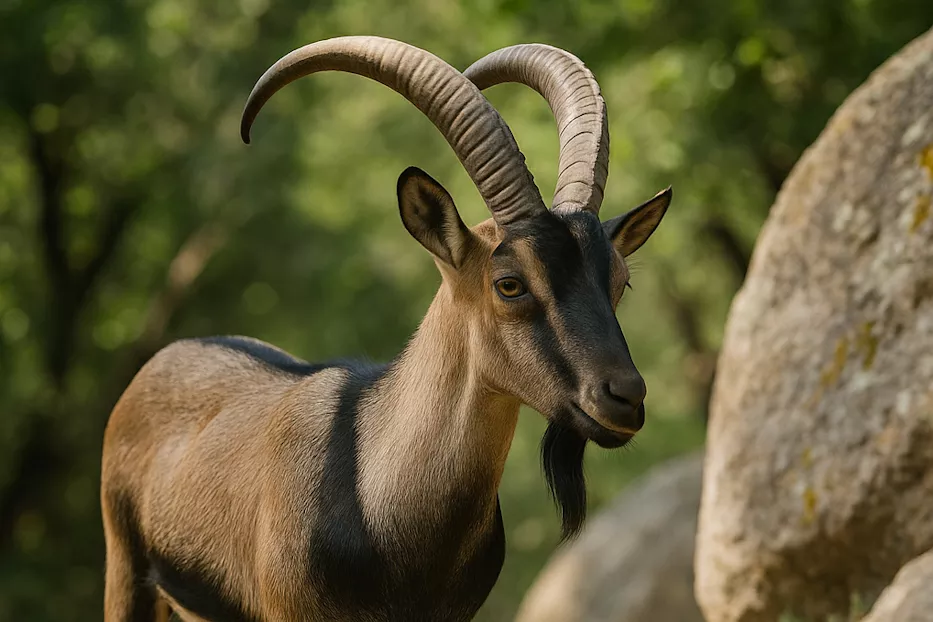If you’ve ever wandered through the rugged gorges and windswept mountains of Crete, you may have caught a fleeting glimpse of an animal that seems half shadow, half legend: the Cretan goat.
Known locally as the kri-kri, this agile creature has been leaping across myths and cliffs for centuries, becoming one of the island’s most enduring symbols.
Crete, the largest of the Greek islands, is a place where snow-dusted peaks rise above sunlit olive groves and turquoise coves. Shaped by ancient Minoan civilization, guarded by Venetian fortresses, and dotted with mountain villages where time moves at its own pace, it offers a rare blend of culture and wilderness. From the wild canyons of the Samaria Gorge to the fertile plains of Messara, the island’s dramatic landscapes provide both a sanctuary and a challenge for the elusive kri-kri.
Table of Contents
Not Just Any Goat
The Cretan goat (Capra hircus cretica) is no ordinary farmyard animal. Thought to descend from goats brought to Crete thousands of years ago by the Minoans, it later returned to the wild and adapted to the island’s harsh terrain. Today, its short sandy-brown coat, dark facial markings, and elegant backward-curving horns give it a look that’s both regal and untamed.
The kri-kri is smaller and more slender than domestic goats, built for speed and climbing rather than dairy or meat production. Its ability to scale near-vertical rock faces isn’t just impressive — it’s essential for survival. These goats inhabit remote areas such as the White Mountains and the Samaria Gorge, where few predators dare to follow. Their diet consists mainly of wild herbs, shrubs, and leaves, giving them the stamina to roam for hours across the most rugged landscapes. In summer, they seek out cooler heights, while in winter they descend to more sheltered valleys, always staying far from human settlements.
Endangered but Protected
By the mid-20th century, overhunting and habitat loss had brought the Cretan goat to the brink of extinction. It was hunted not only for its meat but also as a trophy, admired for its striking horns. Today, the population is strictly protected, with its main stronghold in the Samaria National Park and a few surrounding islets such as Thodorou, Agii Pandes, and Dia.
These measures have helped their numbers recover somewhat, but the species remains vulnerable. One of the greatest threats is crossbreeding with domestic goats, which dilutes the kri-kri’s pure genetic heritage. Conservationists continue to work on maintaining healthy, isolated populations to ensure the Cretan goat remains a distinct emblem of the island.
A Living Emblem of Crete
The kri-kri isn’t just a wildlife treasure; it’s woven into Crete’s cultural fabric. It appears on souvenirs, local artwork, and even in folk dances. Some say it embodies the spirit of the Cretan people: independent, resilient, and unyielding in the face of challenges.
For hikers and nature lovers, spotting a Cretan goat in the wild feels like earning a secret badge of honor. It’s a reminder that some parts of Crete remain as wild and mysterious as they were thousands of years ago.
Responsible Wildlife Encounters
If you’re planning a trip to Crete and hope to see the kri-kri, your best chance is to explore the Samaria Gorge in spring or autumn. The goats are most active early in the morning or late in the day, when the heat is less intense. Bring binoculars: getting close is neither easy nor advisable, as these animals are shy and easily stressed. A good guide can help you spot them from a safe distance while also sharing local history and folklore tied to the species.
Remember: the Cretan goat survives today because of strict protections. Feeding, chasing, or trying to touch them is not only harmful but also illegal. The best way to admire them is from a respectful distance, camera in hand, letting them remain the wild guardians of their mountain realm.

